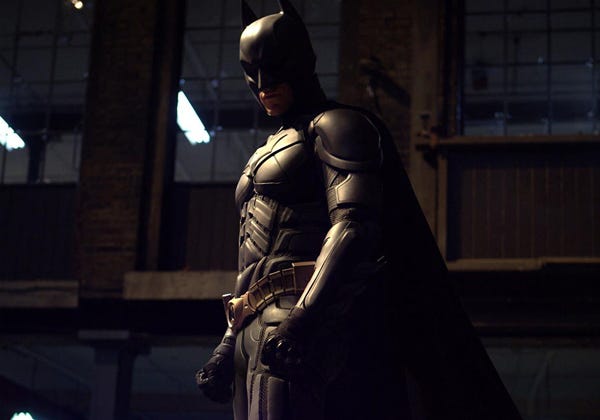Heroes of the Zeroes: Batman Begins / The Dark Knight
Heroes of the Zeroes is a daily, alphabetical look back at the 365 best films from 2000 to 2009. Today's entry counts as two films.
"Batman Begins" / "The Dark Knight" Rated PG-13 2005 / 2008
Amid a barrage of gadgets, powers and close-fitting costumes, it’s easy to forget that legendary comic-book heroes are born from a creator’s sharp comment on the world he sees.
With 2005’s “Batman Begins” and 2008’s “The Dark Knight,” Christopher Nolan applied a much-needed defibrillator to the Bob Kane character’s near-vegetative movie franchise — updating Batman’s M.O. from a 1940s vigilante forged from Depression fragility and inner-city blight in a way that topically tantalized without abandoning noir roots.
Pure panic can’t accompany the predictable. Even the worst plans in scare-tactic politics — continuing war, rising gas prices, dying dollars — are, unfortunately, practices to be foreseen and accounted for. What of those crawling forth from a chasm of unanticipated evil — fueled not by gain or revenge, but ideology and a chaotic interest to prove that decent men cannot exist in indecent times?
These were the electrifying, thought-provoking and satisfyingly explored stakes of Nolan’s films — scorching examinations of the line between heroism and leadership.
They also proved entertainment with a brain as big as its budget could make a most welcome comeback. A pair of Batmobile chases on Chicago’s Lower Wacker Drive — one of them spilling over into the LaSalle Street canyon in the dead of night — were among the most brooding, and best, action sequences of The Zeroes.
Christian Bale makes the best Batman yet — internalizing the importance of the duality between Batman and his alter ego, Bruce Wayne. He dives into a deep well of anger and angst while conveying imperfections and easily exploited vulnerabilities that other Batmen have lacked. Through both films, Bale is ably aided by one of the richest cadres of supporting actors ever assembled — Michael Caine, Aaron Eckhart, Morgan Freeman, Cillian Murphy, Liam Neeson, Gary Oldman and Tom Wilkinson.
But Heath Ledger’s Joker — the late actor’s penultimate role, in the second film — proves the driving agent in a disturbing double feature of destabilization. This Joker fully exploits the fallible nature of those he happily leads to their own annihilations. Plans mean little to a man obsessed with the extinction potential of chaos.
Part and parcel of the Joker’s havoc and destruction is forcing Batman, Eckhart’s tragic D.A. Harvey Dent and Maggie Gyllenhaal’s second-film incarnation of lawyer Rachel Dawes into impossible choices between idealism and love. With an unsettling effortlessness, Ledger establishes himself as the best Batman villain — a brain-to-bones sadist whom, sadly, we’ll never see again.
Moving with jittery squiggles, eyes flitting, face sandblasted and a tongue instinctively licking his scarred mouth, Ledger transforms into evil. You haven’t danced with the devil by the pale moonlight until Ledger takes your psyche out for a twirl.
Adherent to blockbuster formula, “Batman Begins” and “The Dark Knight” triggered as many physical explosions as internal implosions. Yet the damage and mayhem hinged on just how much of their fallout the films’ protagonists could willingly absorb. Taken together as a collective crime saga, action film, character study and social commentary, Nolan’s Batman films were modern, multi-layered masterworks.



